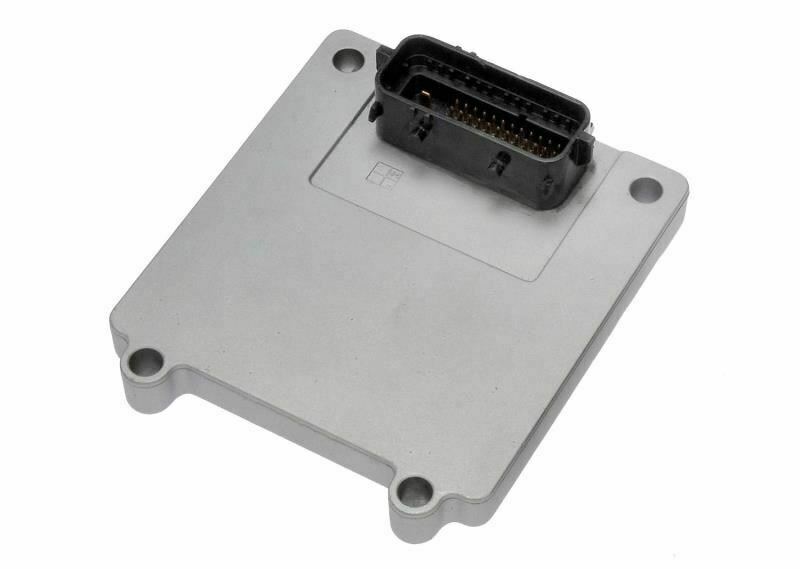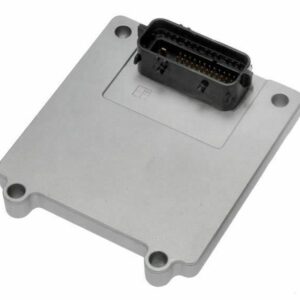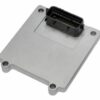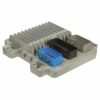Restore Smooth, Reliable Shifting to Your 2005 Cobalt
If you’re dealing with the frustration of a transmission that won’t shift correctly, slams into gear, or has left you stuck in limp mode, you’ve come to the right place. As a technician with over two decades of experience, I’ve seen firsthand how a failing Transmission Control Module (TCM) can bring a perfectly good car to a standstill. This isn’t just an inconvenience; it’s a critical failure that compromises your vehicle’s performance and safety. This replacement TCM is the definitive solution for your 2005 Cobalt, arriving fully programmed to your vehicle’s specific VIN with the latest GM software updates.
A Technician’s Notebook: The Classic GM TCM Failure
A few months back, a 2005 Chevy Cobalt was towed into my bay. The owner was distraught—the car would barely move, and when it did, the shift from first to second gear was so violent it felt like being rear-ended. The check engine light was on, and a quick scan revealed codes P0700 (Transmission Control System Malfunction) and U0101 (Lost Communication with TCM). This is a textbook case. After verifying the wiring harness was intact, we knew the TCM itself had failed internally. These modules, often located in harsh engine bay environments, are susceptible to heat and vibration over time, leading to internal circuit failure. We replaced it with a VIN-programmed unit just like this one, and the car was shifting like new in under an hour. This isn’t just a part swap; it’s a complete restoration of the vehicle’s shifting logic.
Is Your Cobalt Exhibiting These Transmission Woes?
A faulty TCM can manifest in several ways, often getting progressively worse. If you’re noticing any of the following, it’s a strong indicator that your module needs replacement. Addressing it now can prevent further damage to your transmission’s mechanical components.
- ✔ Harsh, erratic, or delayed shifting
- ✔ Vehicle stuck in one gear (limp mode)
- ✔ Inability to shift into drive or reverse
- ✔ Check Engine Light illuminated with transmission-related codes (e.g., P0700, P0753, P0758, U0101)
- ✔ Poor fuel economy due to inefficient shifting
- ✔ Complete loss of communication with the module
The Advantage of a Pre-Programmed 2005 Cobalt TCM
The biggest hurdle in replacing a modern vehicle module is the programming. Traditionally, this required an expensive trip to the dealership for them to use their proprietary tools. We eliminate that step entirely. By providing us with your vehicle’s VIN during checkout, you receive a module that is a true plug-and-play solution. We flash it with the most current GM-released software, which often includes critical improvements over the original programming to enhance shift quality and durability. This ensures perfect communication between the engine, transmission, and other vehicle systems right out of the box.
A Straightforward Guide to Installation
Replacing the TCM on your 2005 Cobalt is a manageable job for a DIY enthusiast. On this specific model, the module is conveniently located, making for a quick swap.
- Safety First: Disconnect the negative terminal from your car’s battery and wait a few minutes to ensure the system is fully discharged.
- Locate the TCM: Open the hood. The Transmission Control Module on the 2005 Cobalt is located on the driver’s side of the engine bay, typically mounted behind the strut tower.
- Disconnect the Connectors: Carefully unclip the wiring harness connectors from the old TCM. Inspect the connectors for any signs of corrosion or damage.
- Remove the Old Module: Unbolt the old TCM from its mounting bracket. There will be a few small bolts holding it in place.
- Install the New Module: Mount your new, pre-programmed TCM onto the bracket and secure it with the bolts.
- Reconnect and Finalize: Firmly plug the wiring harness connectors into the new module until they click. Reconnect the negative battery terminal. The vehicle is now ready for a test drive. No further programming is required.
Verified Vehicle Compatibility
This module is a direct replacement for several part numbers and fits a range of GM vehicles. Please verify your vehicle is on this list. This unit is compatible with part numbers: 24223112, 24226863, 24233595, 24234189, 24239427, YBWW, YDFC, YDFD, YDLT, YJHY, YKTB, YKTF.
- ALLURE 2005 (Transmission; lower air cleaner housing)
- COBALT 2005 (Transmission; LH strut tower)
- CORVETTE 2005 (Transmission; LH frame rail)
- ENVOY 2005 (Transmission; LH engine compartment, 8 cylinder)
- ENVOY XL 2005 (Transmission; LH engine compartment, 8 cylinder)
- ENVOY XUV 2005 (Transmission; LH engine compartment, 8 cylinder)
- GTO 2005 (Transmission)
- GRAND PRIX 2005 (Transmission; lower air cleaner housing)
- ION 2005 (Transmission; behind LH strut tower)
- LACROSSE 2005 (Transmission; 3.6L, lower air cleaner housing)
- PURSUIT 2005 (Transmission; LH strut tower)
- RAINIER 2005 (Transmission)
- RENDEZVOUS 2004-2005 (Transmission; 3.6L, air cleaner box)
- TRAILBLAZER EXT 2005 (Transmission; LH engine compartment, 8 cylinder)
Do I need to program this module?
No. This is the biggest benefit we offer. We program the TCM to your vehicle’s specific VIN before we ship it. It arrives ready for installation with no extra steps needed.
What information do you need from me?
After you complete your purchase, you will need to provide us with your 17-digit Vehicle Identification Number (VIN). This is essential for us to load the correct GM software for your car’s specific configuration.
Where is the TCM located on my 2005 Cobalt?
On the 2005 Chevrolet Cobalt, the Transmission Control Module is located in the engine compartment on the driver’s side, mounted behind the strut tower.
Will this fix my check engine light?
If the check engine light is on due to a faulty TCM (with codes like P0700, U0101, etc.), then yes, replacing the module with this pre-programmed unit will resolve the issue and allow the codes to be cleared.
What is a TCM?
The Transmission Control Module (TCM) is the electronic brain of your automatic transmission. It receives data from various sensors on the engine and vehicle, and uses that information to control shift points, line pressure, and torque converter lockup for optimal performance and fuel efficiency.



